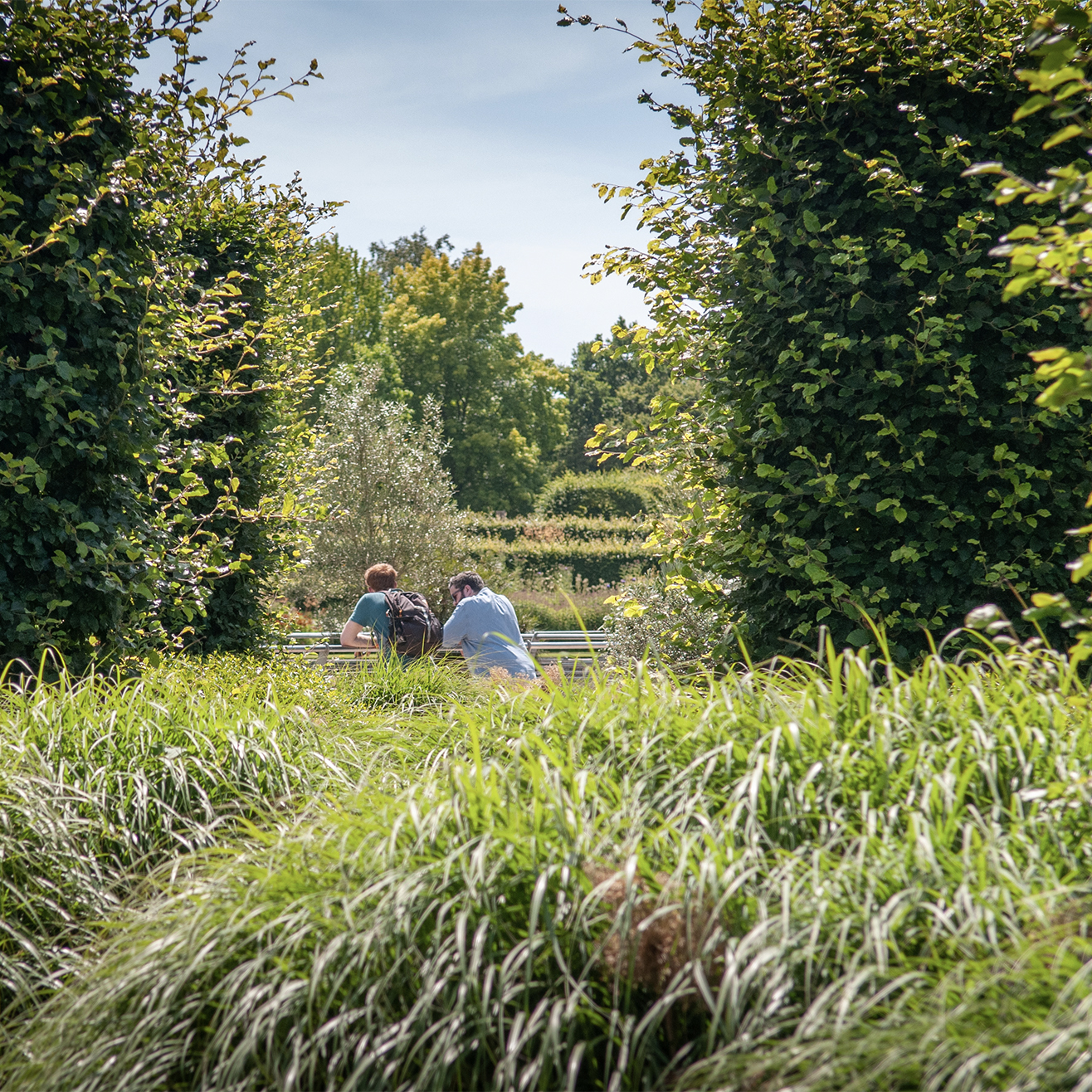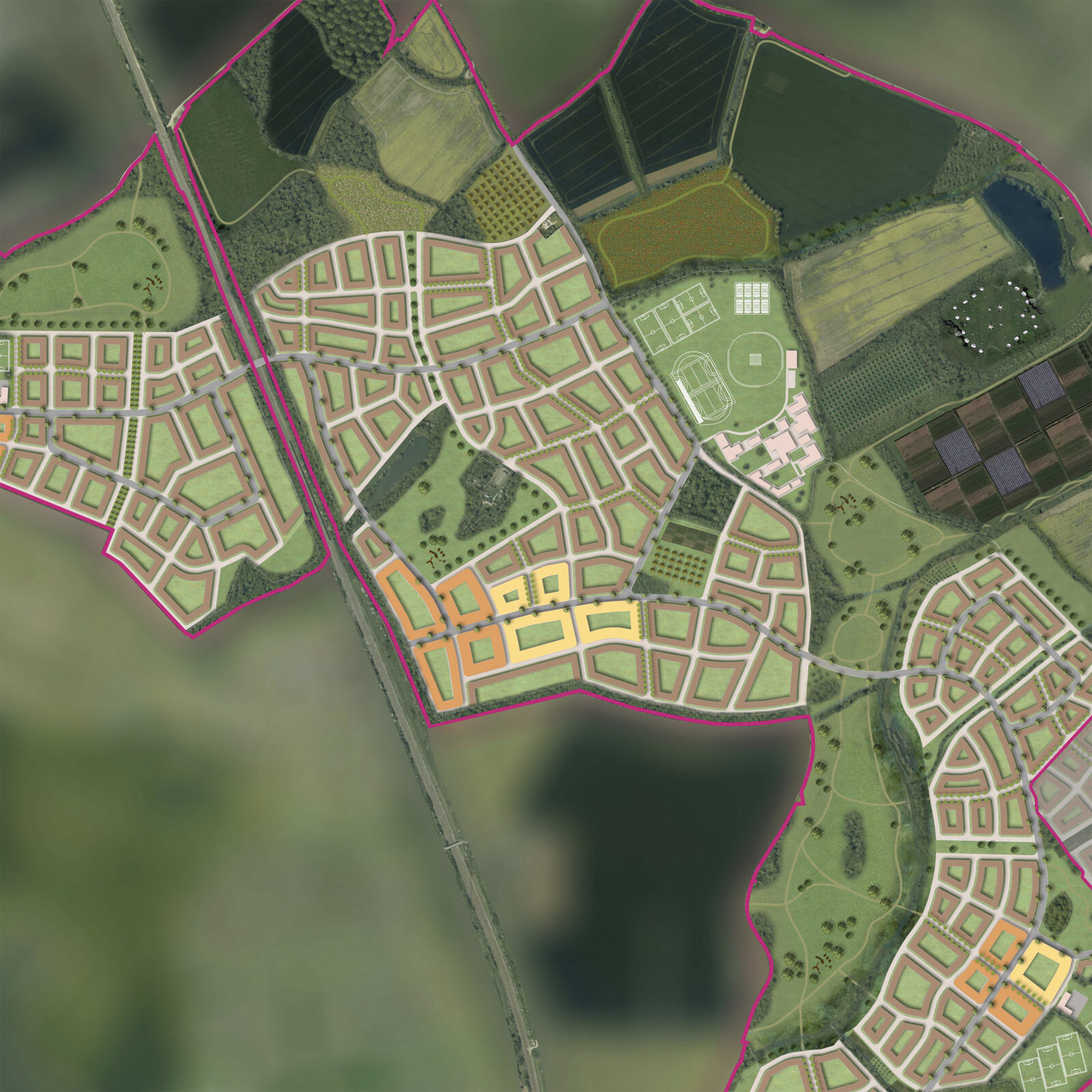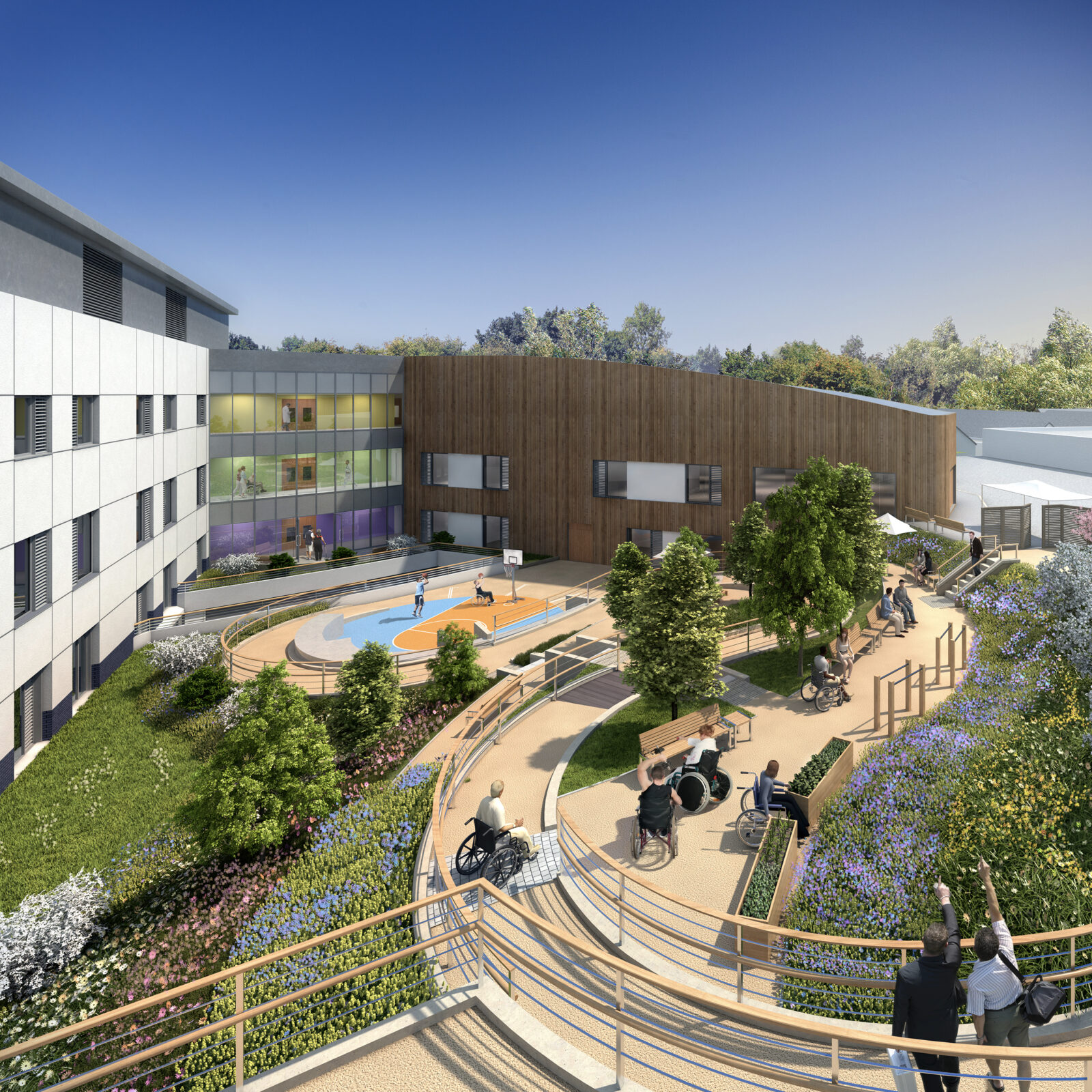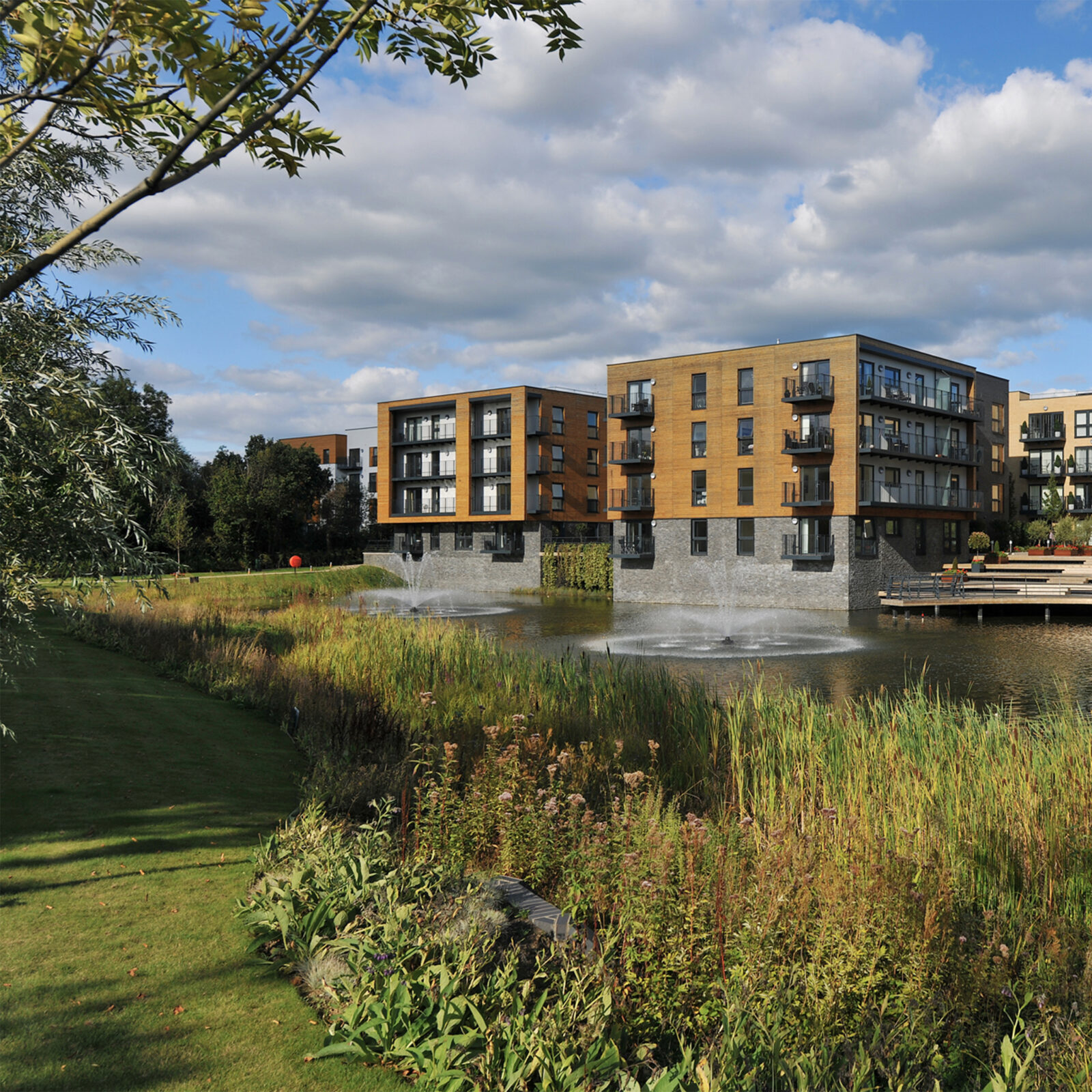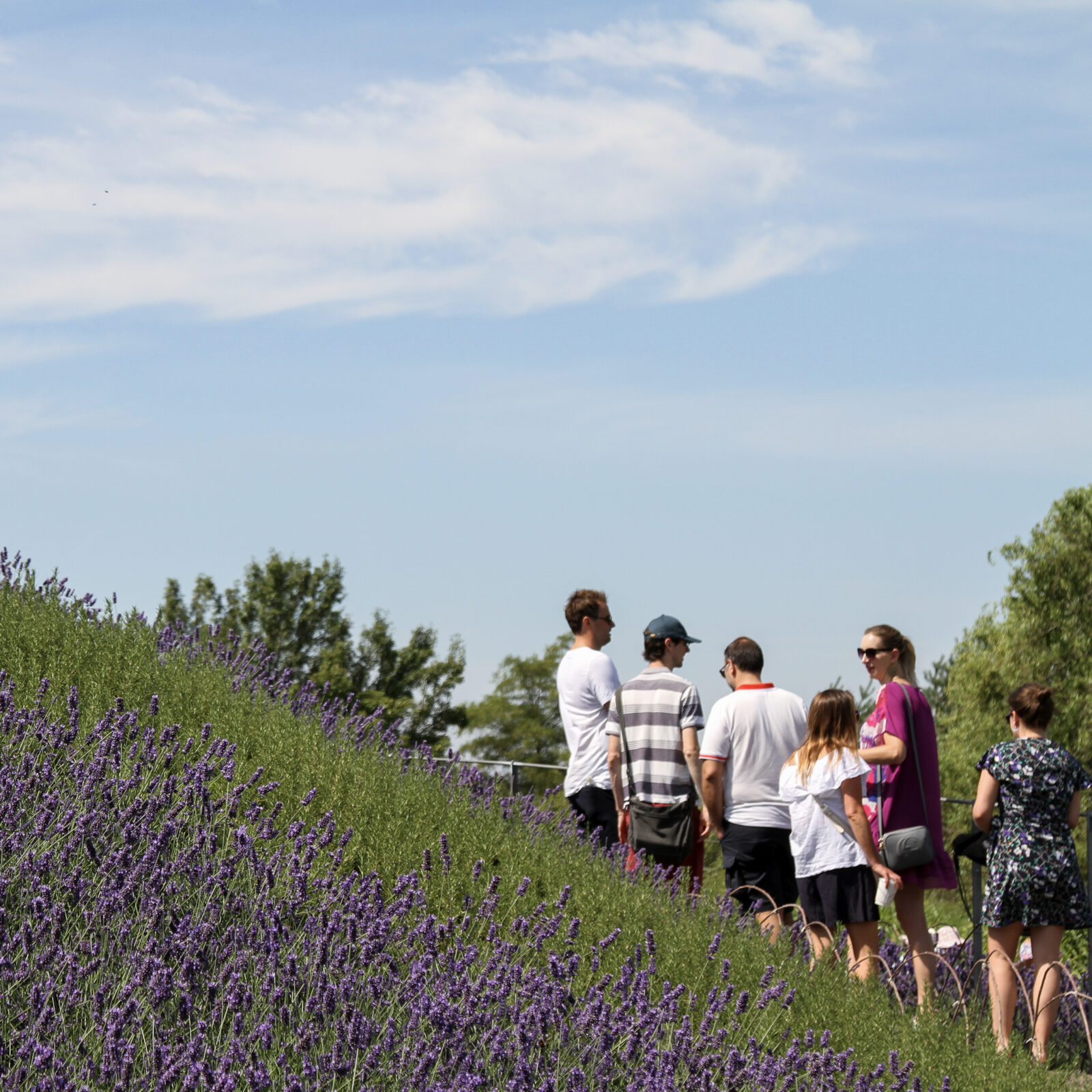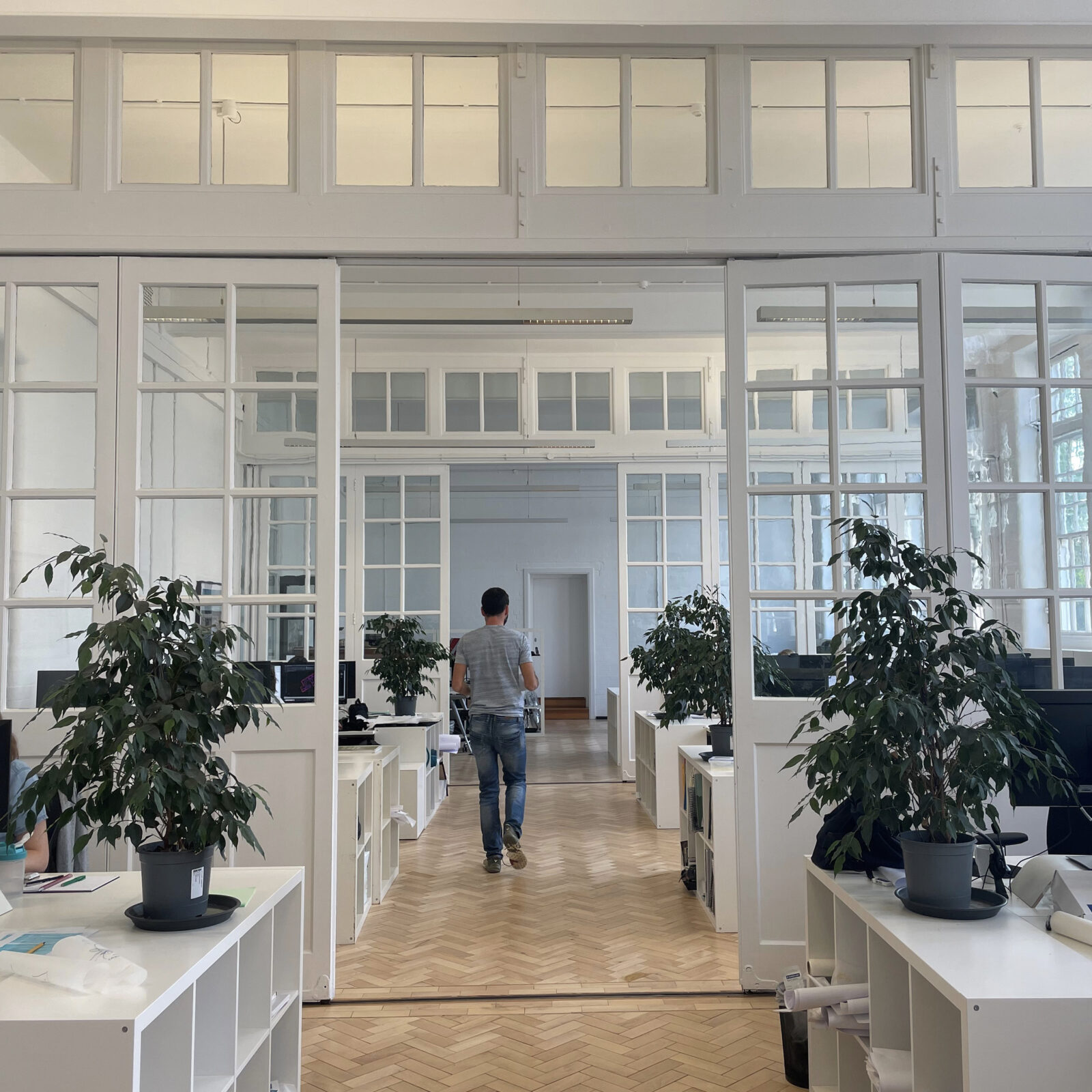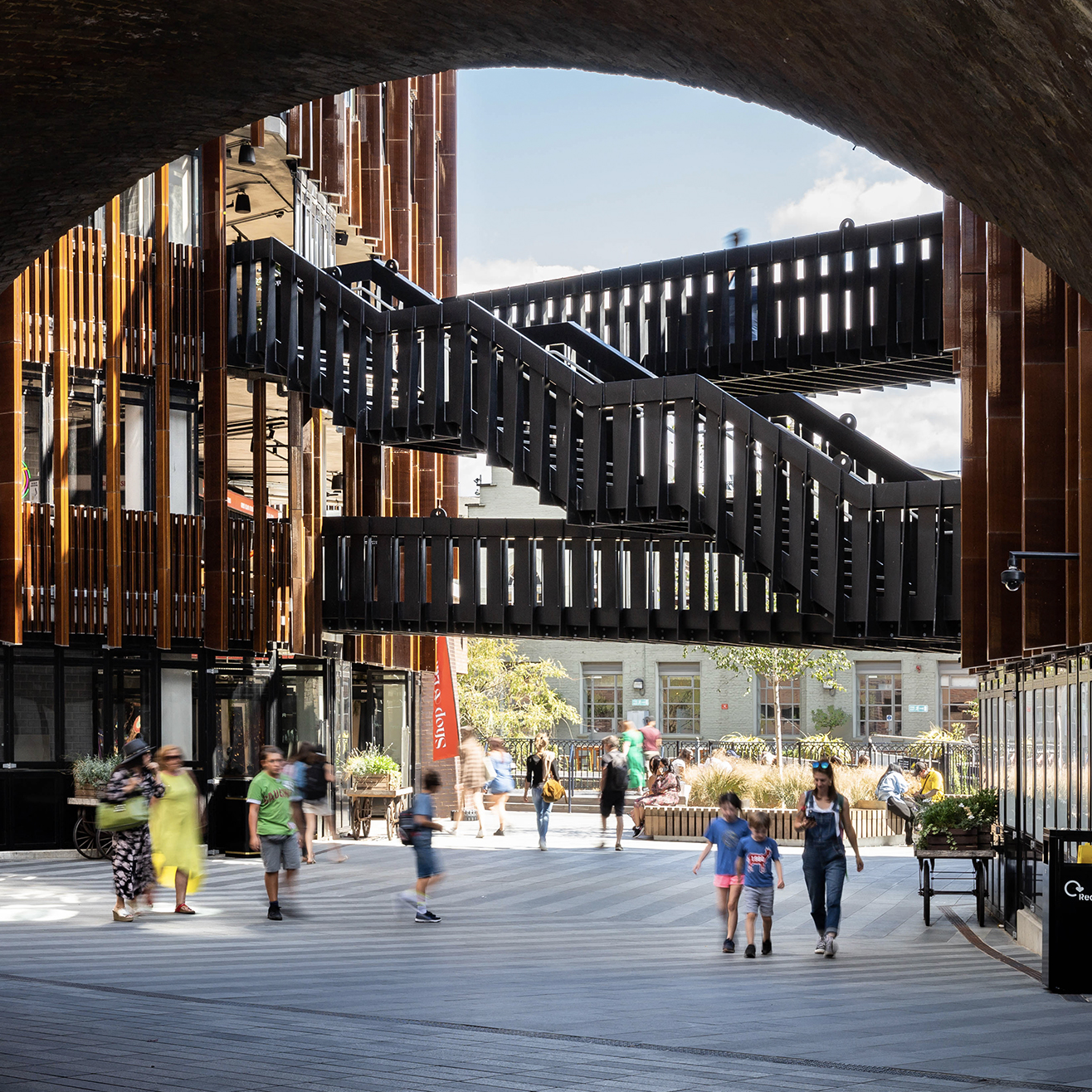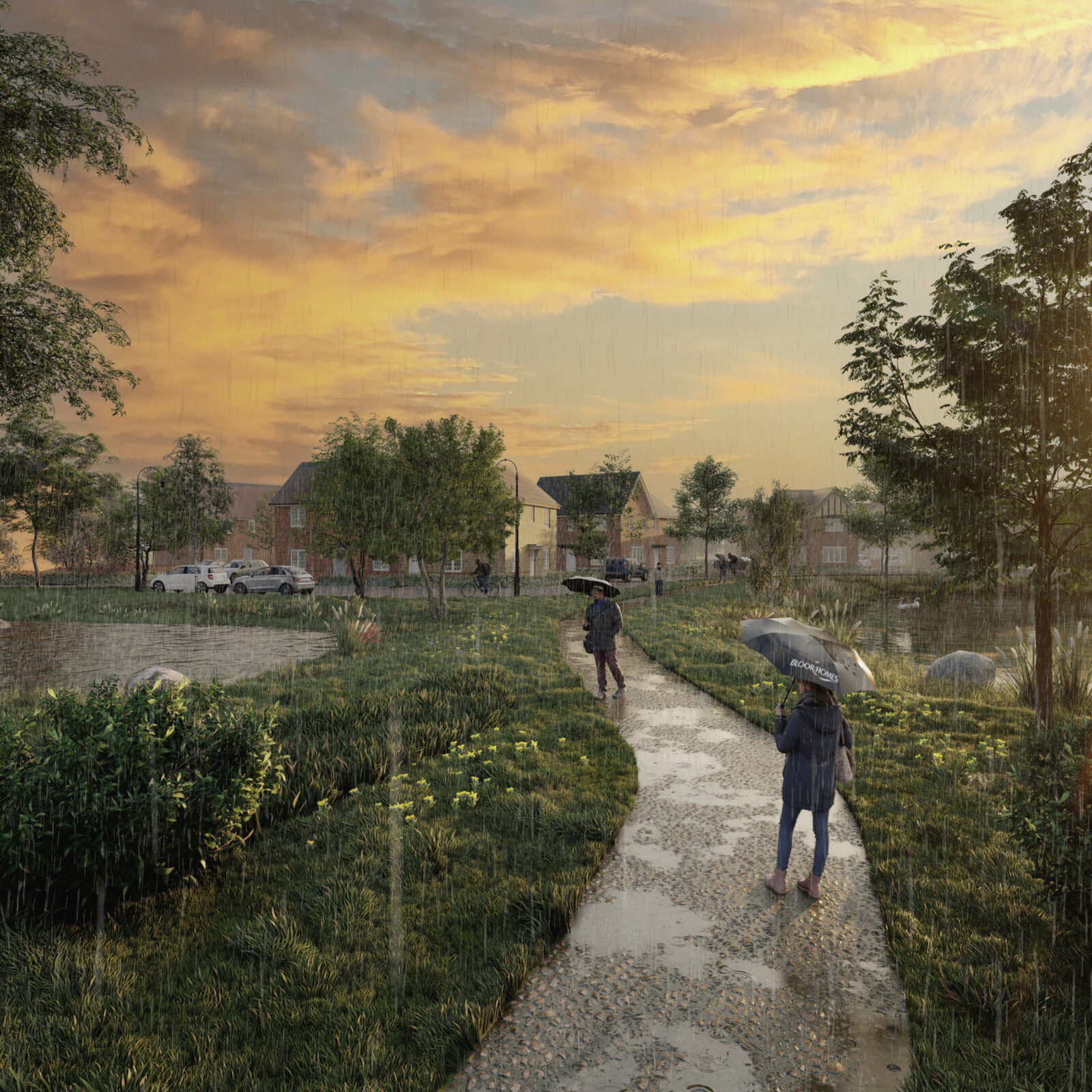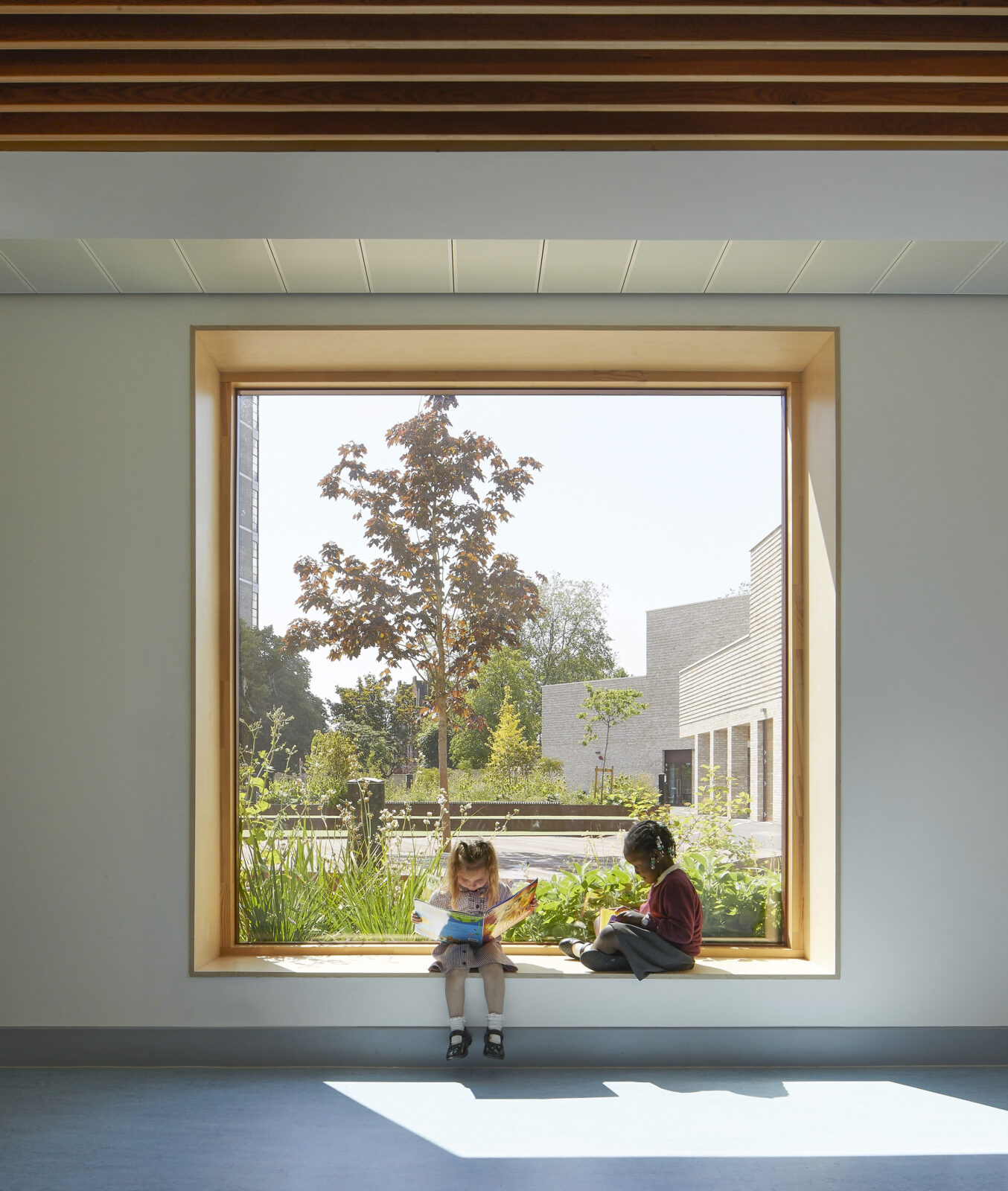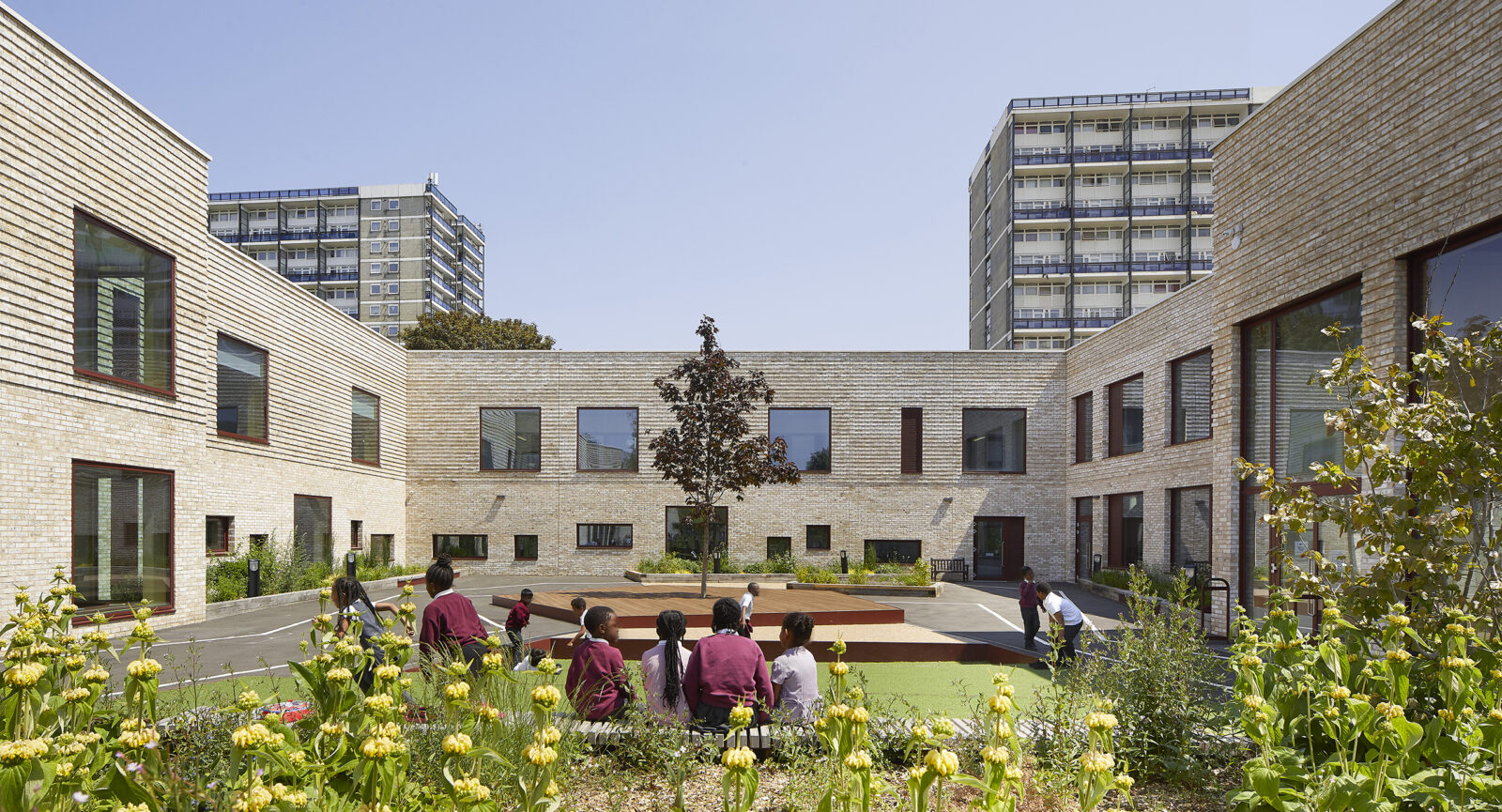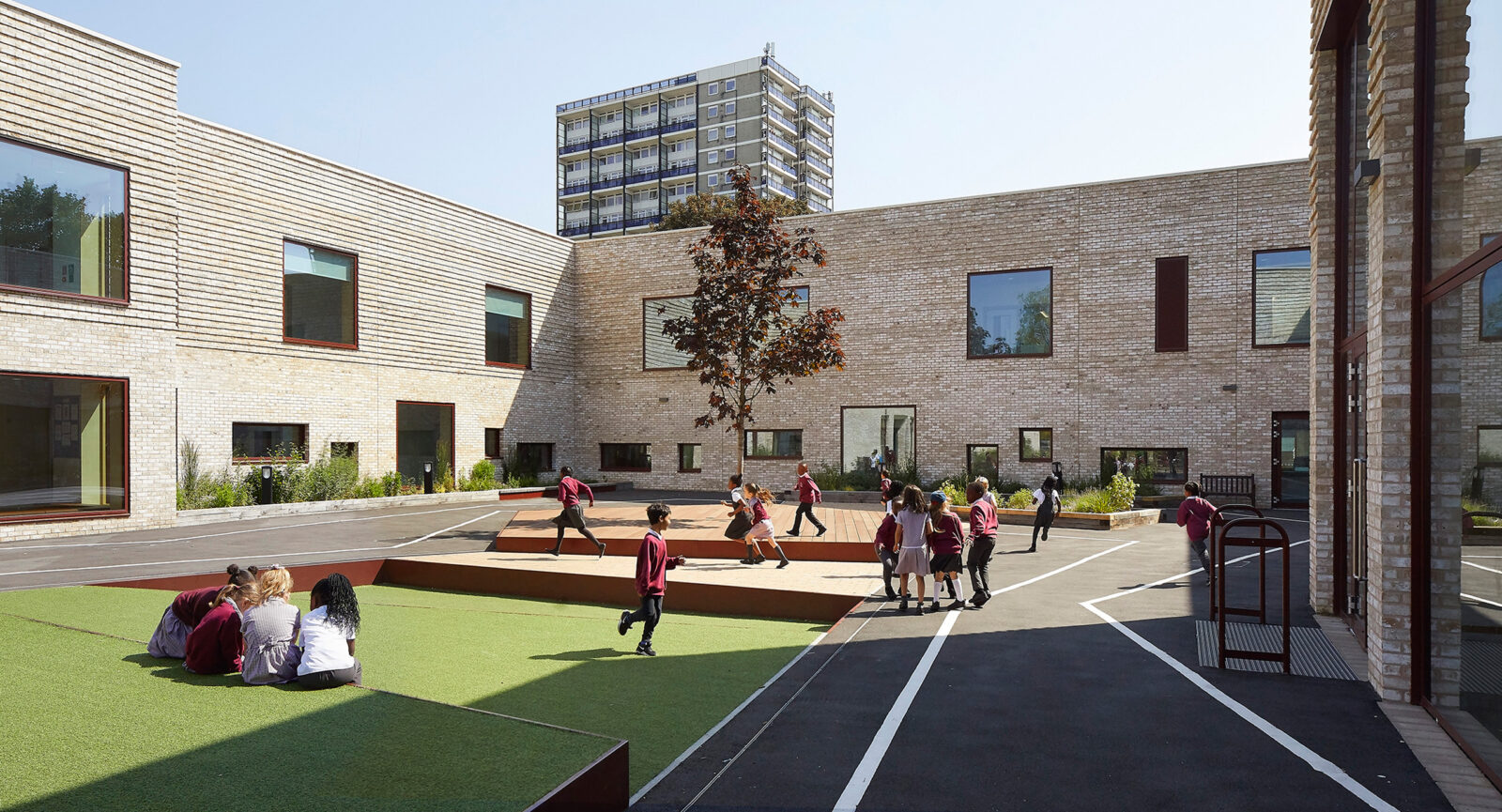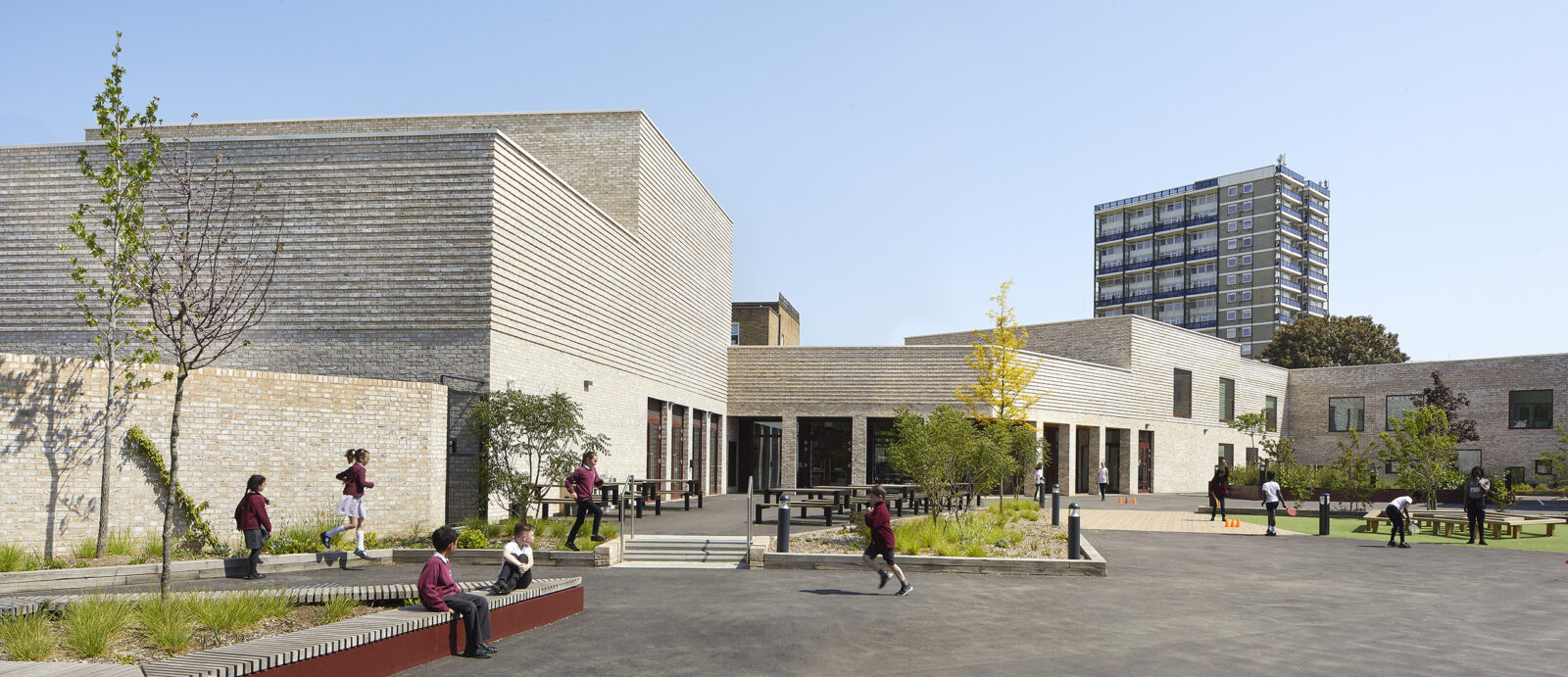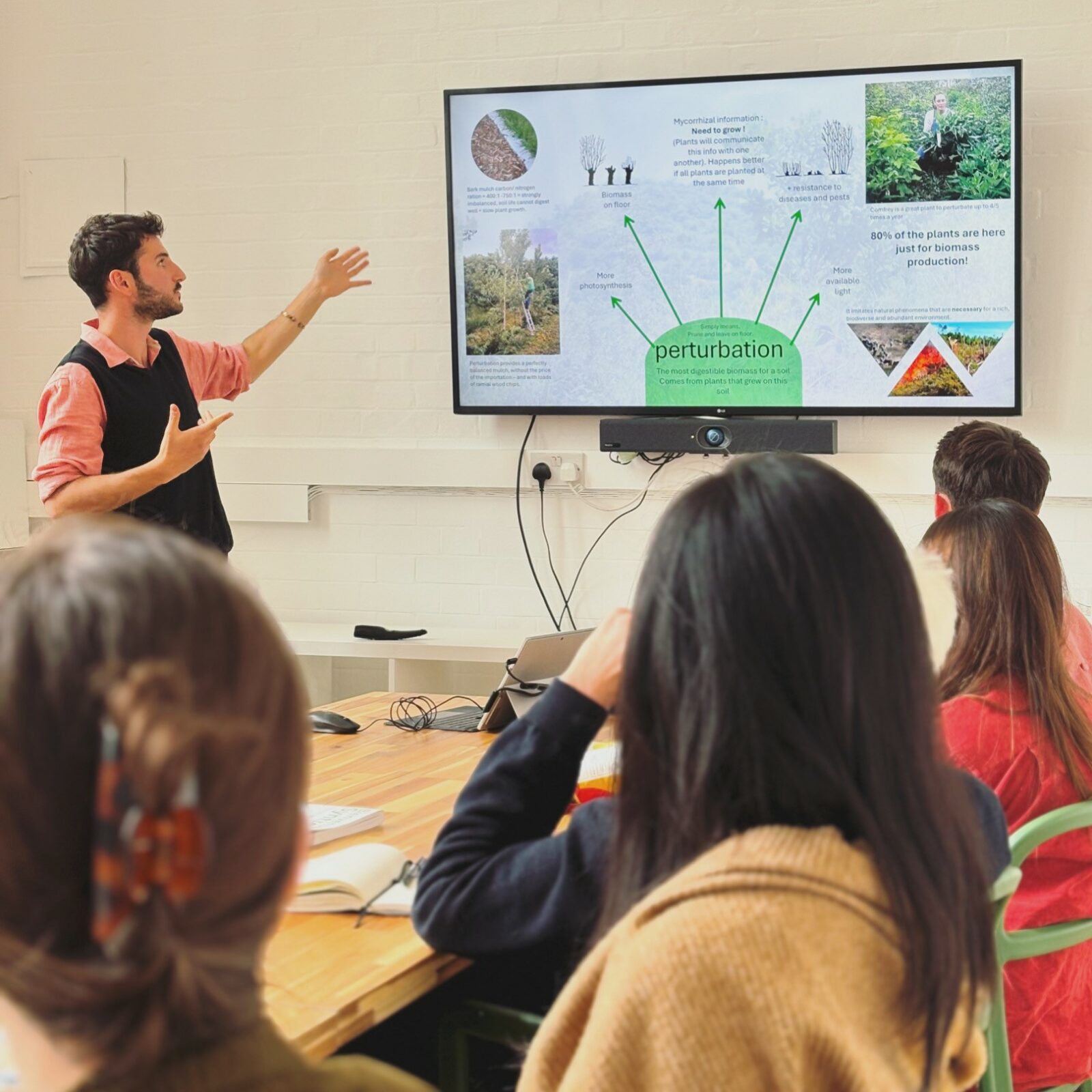The scheme enhances biodiversity, with a rich and diverse planting palette that is unusual for a school setting. Based on the new paradigm of naturalistic planting, it uses palettes of dry steppe species in sunny areas and woodland understorey in shade. Evergreen shrubs are used sparingly for occasional background structure, with herbaceous perennials, groundcovers, deciduous shrubs and multistem trees providing a rich mosaic of habitats and interest. Existing retained trees were incorporated into the landscape to preserve their biodiversity benefits and the mature setting they provide.
The planting palette is drought-resistant to minimise watering requirements to the driest periods of drought only and a wide variety of new tree species were used in an effort to reduce loss from future disease threats. Due to the school’s central London location, the selection included climate-resilient (drought and heat resistant) species such as Cercis, Parrotia, Gleditsia and Koelreuteria. Heat vulnerable species, such as Birch, were avoided. Complex planting mosaic such as this also helps reduce urban pollution, which was a key concern of the school, especially when combined with plants with a large surface area, such as grasses and hairy leaves.
